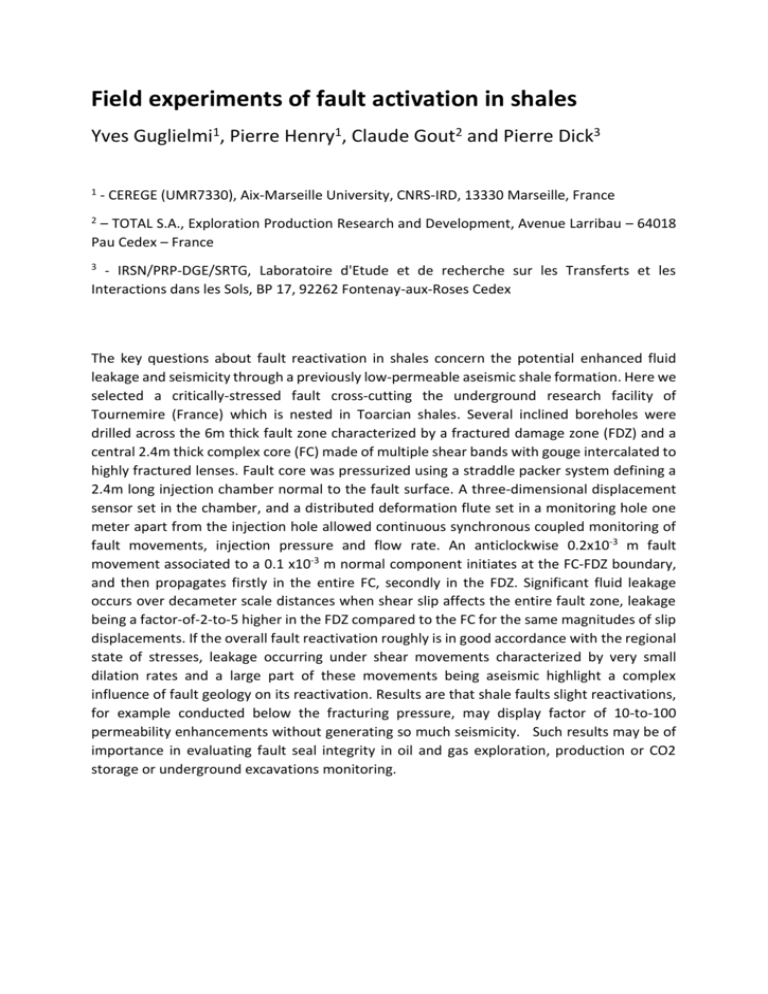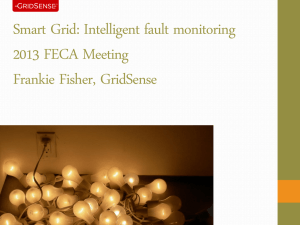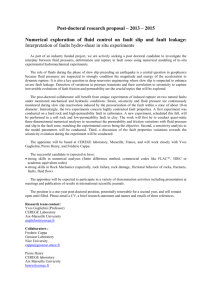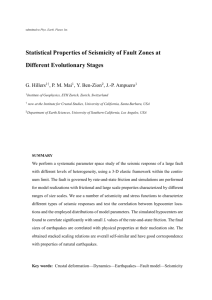Field experiments of fault activation in shales
advertisement

Field experiments of fault activation in shales Yves Guglielmi1, Pierre Henry1, Claude Gout2 and Pierre Dick3 1 - CEREGE (UMR7330), Aix-Marseille University, CNRS-IRD, 13330 Marseille, France 2 – TOTAL S.A., Exploration Production Research and Development, Avenue Larribau – 64018 Pau Cedex – France 3 - IRSN/PRP-DGE/SRTG, Laboratoire d'Etude et de recherche sur les Transferts et les Interactions dans les Sols, BP 17, 92262 Fontenay-aux-Roses Cedex The key questions about fault reactivation in shales concern the potential enhanced fluid leakage and seismicity through a previously low-permeable aseismic shale formation. Here we selected a critically-stressed fault cross-cutting the underground research facility of Tournemire (France) which is nested in Toarcian shales. Several inclined boreholes were drilled across the 6m thick fault zone characterized by a fractured damage zone (FDZ) and a central 2.4m thick complex core (FC) made of multiple shear bands with gouge intercalated to highly fractured lenses. Fault core was pressurized using a straddle packer system defining a 2.4m long injection chamber normal to the fault surface. A three-dimensional displacement sensor set in the chamber, and a distributed deformation flute set in a monitoring hole one meter apart from the injection hole allowed continuous synchronous coupled monitoring of fault movements, injection pressure and flow rate. An anticlockwise 0.2x10-3 m fault movement associated to a 0.1 x10-3 m normal component initiates at the FC-FDZ boundary, and then propagates firstly in the entire FC, secondly in the FDZ. Significant fluid leakage occurs over decameter scale distances when shear slip affects the entire fault zone, leakage being a factor-of-2-to-5 higher in the FDZ compared to the FC for the same magnitudes of slip displacements. If the overall fault reactivation roughly is in good accordance with the regional state of stresses, leakage occurring under shear movements characterized by very small dilation rates and a large part of these movements being aseismic highlight a complex influence of fault geology on its reactivation. Results are that shale faults slight reactivations, for example conducted below the fracturing pressure, may display factor of 10-to-100 permeability enhancements without generating so much seismicity. Such results may be of importance in evaluating fault seal integrity in oil and gas exploration, production or CO2 storage or underground excavations monitoring.











